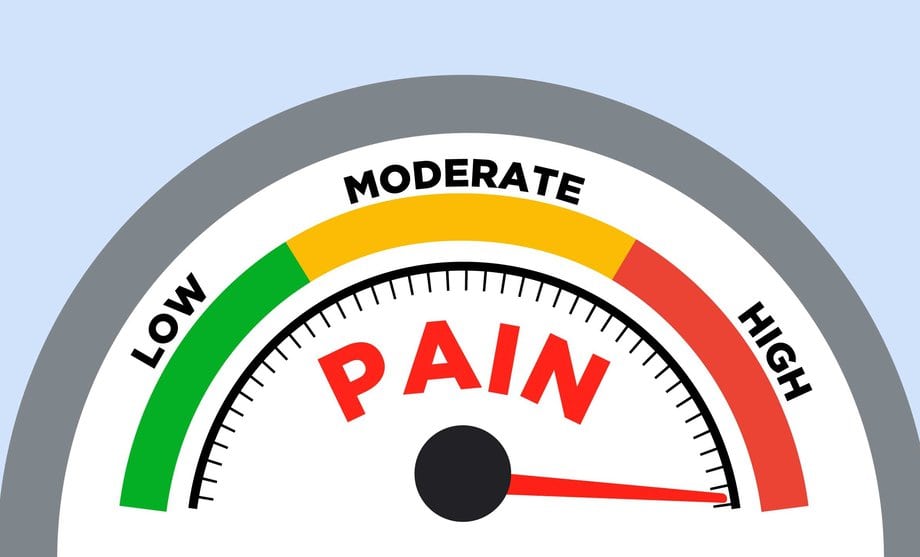What Is the Impact of Chronic Pain on Daily Functioning?

Chronic pain is a prevalent and debilitating condition that significantly affects individuals’ daily functioning. This article aims to explore the impact of chronic pain on various aspects of individuals’ lives, including physical, mental, emotional, social, and financial domains.
By adopting an objective and impersonal perspective, this article seeks to provide a comprehensive understanding of the wide-ranging consequences of chronic pain on individuals’ ability to engage in daily activities and maintain overall well-being.
Additionally, this article will discuss coping strategies and treatment options available to alleviate the burden of chronic pain.
Key Takeaways
- Chronic pain impairs daily activities and tasks.
- Physical therapy and alternative treatments like acupuncture and chiropractic care can improve muscle strength and flexibility, alleviate pain, and enhance daily functioning.
- Coping mechanisms, support systems, and a multidisciplinary approach are important for managing the mental and emotional challenges of chronic pain and improving quality of life.
- Chronic pain can lead to social isolation, strain relationships, and result in a financial burden, but there are coping strategies and treatment options available to address these challenges and improve overall well-being.
The Physical Toll of Chronic Pain
The physical toll of chronic pain can significantly impair an individual’s ability to engage in daily activities and perform essential tasks. Chronic pain is a persistent condition that can have a detrimental impact on physical functioning.
Individuals with chronic pain often experience limitations in their mobility, which can make it challenging to carry out simple tasks such as walking or standing for prolonged periods. Moreover, chronic pain can also result in muscle weakness and decreased endurance, further exacerbating functional limitations.
Physical therapy is commonly recommended as a treatment approach to address these physical impairments. Physical therapy interventions, such as exercise programs and manual therapy techniques, aim to improve muscle strength, flexibility, and overall physical functioning.
Additionally, alternative treatments such as acupuncture or chiropractic care may also be considered to alleviate pain and improve physical functioning.
Overall, the physical toll of chronic pain necessitates the implementation of various interventions, including physical therapy and alternative treatments, to mitigate its impact on daily functioning.
Mental and Emotional Challenges Faced by Chronic Pain Sufferers
This discussion will focus on coping mechanisms for individuals who experience chronic pain and the support systems available to them.
Coping mechanisms play a crucial role in helping chronic pain sufferers manage their symptoms and improve their quality of life.
Furthermore, having a strong support system can provide emotional and practical assistance, offering a sense of validation and understanding for those living with chronic pain.
Coping Mechanisms for Chronic Pain Sufferers
Coping mechanisms for chronic pain sufferers involve various strategies to manage and mitigate the impact of pain on daily functioning. Pain management techniques play a crucial role in helping individuals cope with chronic pain. These techniques can include pharmacological approaches, such as the use of analgesic medications and anti-inflammatory drugs, as well as non-pharmacological interventions.
Alternative therapies are also commonly employed as coping mechanisms for chronic pain. These therapies may include acupuncture, yoga, massage therapy, and mindfulness meditation. Alternative therapies are often sought out by individuals who prefer non-invasive and holistic approaches to pain management. These techniques can help reduce pain intensity, improve physical function, and enhance overall well-being.
However, it is important to note that the effectiveness of coping mechanisms can vary between individuals, and a multidisciplinary approach may be necessary to tailor treatment plans to each person’s specific needs.
Support Systems for Chronic Pain
Support systems play a crucial role in helping individuals with chronic pain manage their condition and improve their overall well-being. These systems provide a network of emotional, physical, and social support that can significantly impact an individual’s ability to cope with chronic pain.
Here are three key ways in which support systems can assist in chronic pain management:
- Emotional support: Having someone to talk to about the challenges and frustrations of living with chronic pain can be immensely helpful. Support from friends, family, or support groups can provide a sense of validation and understanding, reducing feelings of isolation and promoting psychological well-being.
- Physical support: Support systems can also offer practical assistance in managing daily activities that may be difficult due to chronic pain. This may include help with household chores, transportation to medical appointments, or assistance with personal care tasks.
- Access to alternative therapies: Support systems can help individuals explore and access alternative therapies for chronic pain management. These may include acupuncture, massage therapy, mindfulness-based stress reduction, or yoga. By providing information and resources, support systems can empower individuals to try different approaches and find what works best for them.
Social Isolation and Relationship Strain Caused by Chronic Pain
Loneliness and strained relationships are commonly experienced by individuals with chronic pain.
The constant physical discomfort and limitations imposed by chronic pain often lead to decreased social interactions and isolation, contributing to feelings of loneliness.
Additionally, the emotional and psychological burden of chronic pain can strain relationships, as the individual may struggle to fulfill their social roles and responsibilities, leading to conflict and frustration among family members and friends.
Loneliness and Chronic Pain
The relationship between chronic pain and social isolation has been extensively studied, with research consistently finding a strong association between loneliness and the experience of living with persistent pain. Individuals who suffer from chronic pain often face challenges in their social life due to the impact of their condition.
- Social withdrawal: Chronic pain can lead to a withdrawal from social activities and interactions, as individuals may find it difficult to engage in social gatherings or participate in activities that require physical exertion.
- Reduced social support: Living with chronic pain can result in decreased social support, as individuals may find it difficult to maintain relationships or seek support from friends and family members.
- Emotional distress: Loneliness can contribute to emotional distress in individuals with chronic pain, exacerbating their symptoms and negatively impacting their overall well-being.
Understanding the impact of loneliness on individuals with chronic pain is crucial for developing effective interventions aimed at improving their social functioning and overall quality of life.
Strained Relationships With Pain
Strained relationships between individuals with persistent pain and their social network can arise due to the challenges associated with managing their condition. These challenges can lead to social isolation and a decrease in overall well-being. The impact of chronic pain on daily functioning can be profound, affecting not only the individual experiencing the pain but also their relationships with others. The table below illustrates some common difficulties faced by individuals with chronic pain and how these challenges can strain their relationships:
| Challenges Faced by Individuals with Chronic Pain | Impact on Relationships |
|---|---|
| Difficulty participating in social activities | Decreased social interaction and isolation |
| Mood changes and irritability | Tension and conflicts |
| Increased dependency on others | Strain on caregivers and loved ones |
| Communication barriers | Misunderstandings and frustration |
| Decreased energy and motivation | Reduced engagement in relationships |
These challenges can contribute to strained relationships and social isolation, further impacting the individual’s overall well-being. It is crucial to address these challenges to improve the quality of life for individuals with chronic pain and enhance their social support networks.
Impairments in Daily Activities and Productivity
Impairments in daily activities and productivity are commonly observed among individuals experiencing chronic pain. The debilitating effects of chronic pain can significantly impact an individual’s ability to carry out routine tasks and fulfill their responsibilities.
Here are four key ways in which chronic pain can lead to impairments in daily activities and productivity:
- Reduced physical functioning: Chronic pain can limit an individual’s mobility, making it difficult to perform basic activities such as walking, standing, or even sitting for extended periods.
- Cognitive difficulties: Chronic pain can affect cognitive functioning, leading to problems with concentration, memory, and decision-making. This can hinder productivity in both personal and professional settings.
- Emotional distress: Chronic pain often causes emotional distress, including depression, anxiety, and frustration. These emotional challenges can further impair an individual’s ability to engage in daily activities and maintain productivity.
- Sleep disruptions: Chronic pain can disrupt sleep patterns, leading to fatigue and decreased energy levels. This can make it challenging to complete tasks efficiently and effectively.
Overall, chronic pain can have a profound impact on an individual’s ability to carry out daily activities and maintain productivity. Understanding these impairments is crucial in developing effective strategies to manage and mitigate the negative consequences of chronic pain.
The Financial Burden of Chronic Pain
Financial burden is a significant concern for individuals who experience chronic pain. The cost of healthcare and related expenses can be overwhelming, leading to financial distress and limited access to necessary treatments. Financial assistance programs can provide relief to those struggling with the financial implications of chronic pain. These programs aim to alleviate the burden by offering financial aid, discounts, or subsidies for healthcare costs, medications, and therapies. Additionally, some organizations and foundations offer grants and scholarships specifically for individuals with chronic pain. These financial assistance programs can play a crucial role in improving the quality of life for those living with chronic pain, ensuring that they have access to necessary treatments and resources without incurring excessive financial hardship.
| Financial Assistance Programs | Description |
|---|---|
| Patient Assistance Programs | Offer financial aid and discounts on medications and treatments |
| Nonprofit Organizations | Provide grants and scholarships for individuals with chronic pain |
| State and Federal Assistance Programs | Offer subsidies and financial aid for healthcare costs |
| Charitable Foundations | Provide financial assistance for specific chronic pain conditions |
Coping Strategies and Treatment Options for Chronic Pain
Cognitive-behavioral therapy and mindfulness-based stress reduction are two commonly utilized coping strategies for individuals with chronic pain. These strategies aim to address the physical and psychological aspects of pain, providing individuals with tools to manage their symptoms and improve their quality of life.
In addition to these evidence-based therapies, there are also alternative therapies that individuals may consider for pain management. These include acupuncture, yoga, Tai Chi, and herbal remedies. While the effectiveness of these alternative therapies may vary, they can offer additional options for individuals seeking relief from chronic pain.
Mindfulness techniques, such as meditation and deep breathing exercises, are also commonly incorporated into these alternative therapies, promoting relaxation and reducing stress.
Overall, the combination of cognitive-behavioral therapy, mindfulness-based stress reduction, and alternative therapies can provide individuals with a comprehensive approach to managing chronic pain.
Frequently Asked Questions
How Does Chronic Pain Affect the Overall Quality of Life?
The impact of chronic pain on daily functioning is significant, as it affects various aspects of an individual’s life. It diminishes the overall quality of life, causing limitations in physical activities, social interactions, and emotional well-being.
Are There Any Specific Age Groups or Demographics That Are More Prone to Experiencing Chronic Pain?
The impact of chronic pain on daily functioning varies across age groups and demographics. Prevalence rates suggest that certain populations, such as older adults and individuals with lower socioeconomic status, may be more prone to experiencing chronic pain. Risk factors and coping strategies for managing chronic pain also differ among different groups.
Can Chronic Pain Lead to the Development of Mental Health Disorders Such as Depression or Anxiety?
The impact of chronic pain on mental health and the relationship between chronic pain and psychiatric disorders have been explored. It is suggested that chronic pain may contribute to the development of mental health disorders such as depression and anxiety.
What Are Some Common Misconceptions About Chronic Pain That People Often Have?
Misunderstandings and myths surrounding chronic pain can lead to misconceptions. These misconceptions may impact how individuals perceive and manage their chronic pain, potentially affecting their daily functioning and overall quality of life.
Are There Any Alternative Treatment Options for Chronic Pain Besides Medication?
Non pharmacological approaches and holistic treatment options are available for chronic pain management. These alternatives, such as physical therapy, acupuncture, and cognitive behavioral therapy, aim to alleviate pain and improve daily functioning.









